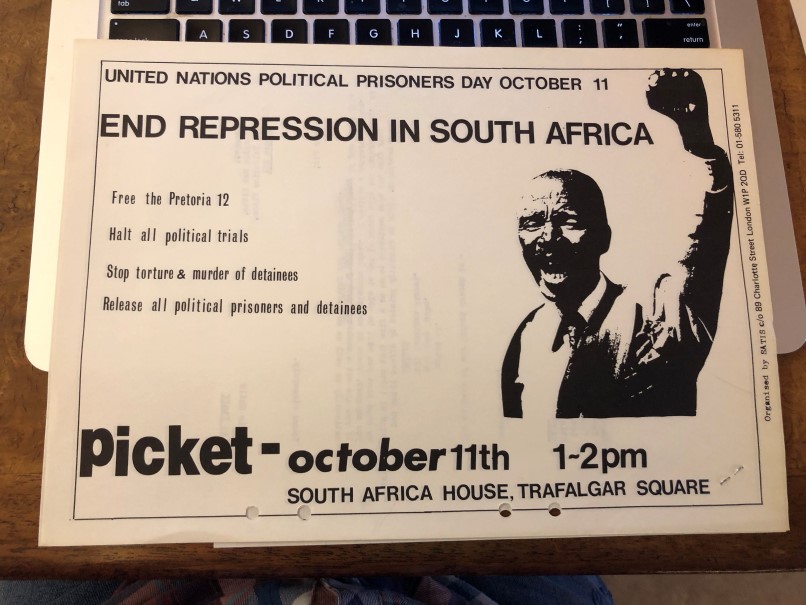The race and diversity narratives project with the Bodleian Libraries and the Museum of Oxford allowed me to explore a crucial aspect of the city of Oxford and its inhabitants. For my research I looked at the Anti-Apartheid Movement (AAM) archives, dating back to the 1960s, directly in correlation with the contemporary Rhodes Must Fall (RMF) 2.0 protests from summer and the global Black Lives Matter movement.
It was fascinating to trace the common elements between these two historical protests that the city of Oxford has witnessed. The simple but powerful Black Power Fist signifies just how connected the movements are. A poster from the 1980s for ‘End Repression in South Africa’ depicts a man raising his fist and can be directly compared with a picture from 2020 RMF movement and a protestor using the same powerful symbol.
Beyond significant symbols, the city as a space, the involvement of the students and city dwellers together, all become a part of the continued common history.
The AAM archives hold several letters and correspondences between the local chapter and the national one, between AAM and Oxford citizens who want to be more involved and supportive of the movement, minutes and proceedings of Oxford City Meetings and AAM meetings. The call for protests above is similar to the calls we send out today, the method of dissemination might have evolved, the sentiment remains the same – to unify and stand together.
One particular incident that stood out to me was the boycott of the Apollo Theatre during the Christmas of 1987 because the theatre starred Marti Caine, an actress who said: ‘The best thing we can do for the blacks is send them back into the jungle to recover their culture.’ The protest and the boycott led to Caine issuing a public apology and signing the AAM petition. Caine and Rhodes, Apollo Theatre and Oriel College, these are not the same issues, but similar in how spaces and people come to represent ideologies, often extremely problematic ones, but simultaneously how a unified stand against such ideas brings them down.
The idea of common elements or ‘threads’ between the two protests, for me, reflects how the fight for racial equality is an ongoing conversation and struggle but it has multiple sides to it. While the positives show that the people of Oxford have time and again stood up against the injustice, the counter-question becomes why have these injustices continued well into the 21st century? A critical exploration of archives at the Bodleian relating to the city of Oxford allowed me to ask these questions while contributing to and continuing the conversation. It is perhaps in these historically extending common threads across the decades that the meaning of ‘a movement and not a moment’ truly shines through as minority identities continue their struggles against historical and contemporary injustices.
Devika Summer Intern 2020, Bodleian Libraries and Museum of Oxford MPhil Modern South Asian Studies (2019-2021), St Antony’s College, University of Oxford


